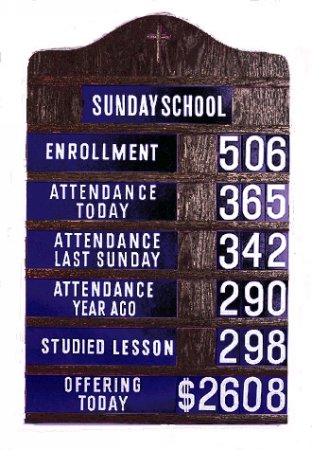Baptists have contributed a number of distinctives to the doctrine of the church: believer’s baptism, congregational government, local church autonomy, and the priesthood of the believers are examples. There is, though, a more fundamental idea about what the church should be that roots all these distinctives – a body of regenerate (i.e., regenerated, saved) believers. Regenerate church membership is the distinctively Baptist mark of the church.
Baptist historian Leon McBeth writes, “Perhaps the origin of Baptists is best explained as a search for a pure church.”[1] The idea of a pure church as a pure Bride of Christ leads to the Baptist mark of the church, regenerate church membership. Believer’s baptism is important because it is a way we ensure the church remains pure. Closed communion reflects the high value of a pure and regenerate church. Congregational government is possible because the church is composed of regenerate believers.
Effective church discipline is possible because of a regenerate church membership, for only such a church will have the compassion and courage to lovingly correct and protect a believer and the church membership. Church discipline protects the purity of the church by removing those whose lives demonstrate they are unregenerate (unsaved.) In 1905, at the first Baptist World Congress in London, J.D. Freeman said, “The principle of regenerate church membership more than anything else, marks our distinctiveness in the world today.”
Baptist Confessions of Faith – Regenerate church membership (a congregation of saved individuals) is also reflected in the historic Baptist confessions of faith. Each of them show a concern that those baptized and received as members of the church be genuinely saved by Christ Jesus, or “visible saints,” living a separated life, different from the world, giving evidence of the faith they profess. The Somerset Confession (1656) declares, “In admitting a member into the church of Christ, it is the duty of the church, and ministers whom it concerns, in faithfulness to God, that they be careful they receive none but such as make evident demonstration of the new birth, and the work of faith with power.” The Second London Confession (1689) says, “The members of these churches are saints by calling, visibly manifesting and evidencing (in and by their profession and walking) their obedience unto that call of Christ.” The Charleston (SC) Confession (1773) adopted three prerequisites to church membership. First, they required conversion (“an entire change of nature”). Second, they required that new members have some competent knowledge of divine and spiritual things, viz., doctrine. Third, they required that church members’ lives not contradict their profession of faith, that their lives support their confession.
Church Discipline – Zeal for regenerate church membership can be seen in Baptists’ historic emphasis on church discipline. From the time of the early Anabaptists (1500s) until the late 1800s, church discipline was commonly practiced among Baptists. There was no mean or judgmental spirit behind it, but a concern for the purity of the church, for people who name Christ to live like followers of Christ. At the end of the American Revolution, only 10% of the American population was Evangelical.
| The area generally considered the Bible Belt |
Between 1810 and 1830, Southern evangelicals, including Baptists, began to accommodate their teachings and practices to the culture to present fewer obstacles to church membership, and the numbers began to rise. Churches won members by surrendering to the culture, and religion became a mile wide and an inch deep, leading to what became the Bible Belt.[2]
Today, Southern Baptist churches make a mockery of the concept of a regenerate church membership. In 2007, of 16.2 million Southern Baptists on roll, average Sunday morning worship attendance was 6.15 million – less than 38%.[3] For the local church, this means that from a roll of 400 members, 150 are present on any given Sunday morning. For the Southern Baptist Convention as a whole, it means 10 million supposedly regenerate members were not committed enough to attend their church’s major worship service once a week. Many of our churches have names on the roll whose whereabouts are unknown, even if they are dead or alive.
The Missing Link – It is obvious that regenerate church membership is totally missing in Southern Baptist life, and the consequences are disastrous. Membership in an SBC church means nothing, and our corporate witness is soiled for unbelievers. In a Lifeway survey, 72% of respondents said the churches are full of hypocrites. Worse, 86% said one can be a Christian without being a member of a church. Even the practice of congregational government becomes difficult when unsaved church members are a significant voice in the church. If 60% of the congregation has no interest in the church, how can the congregation possibly hear God? More tragic, millions of church members are trusting in their membership to get them to heaven but in all other respects they are non-Christian. If we have 10 million missing church members, most of them are most probably unsaved. There is a grave concern about your eternal destiny when you don’t associate with your congregation. If there is no fruit, then perhaps there is no root.
[1] Leon McBeth, The Baptist Heritage, 75.
[2] See Christine L. Heryman, Southern Cross: The Beginnings of the Bible Belt, 1997.
[3] It bears noting that the percentage has increased from 33% in 1997.


No comments:
Post a Comment